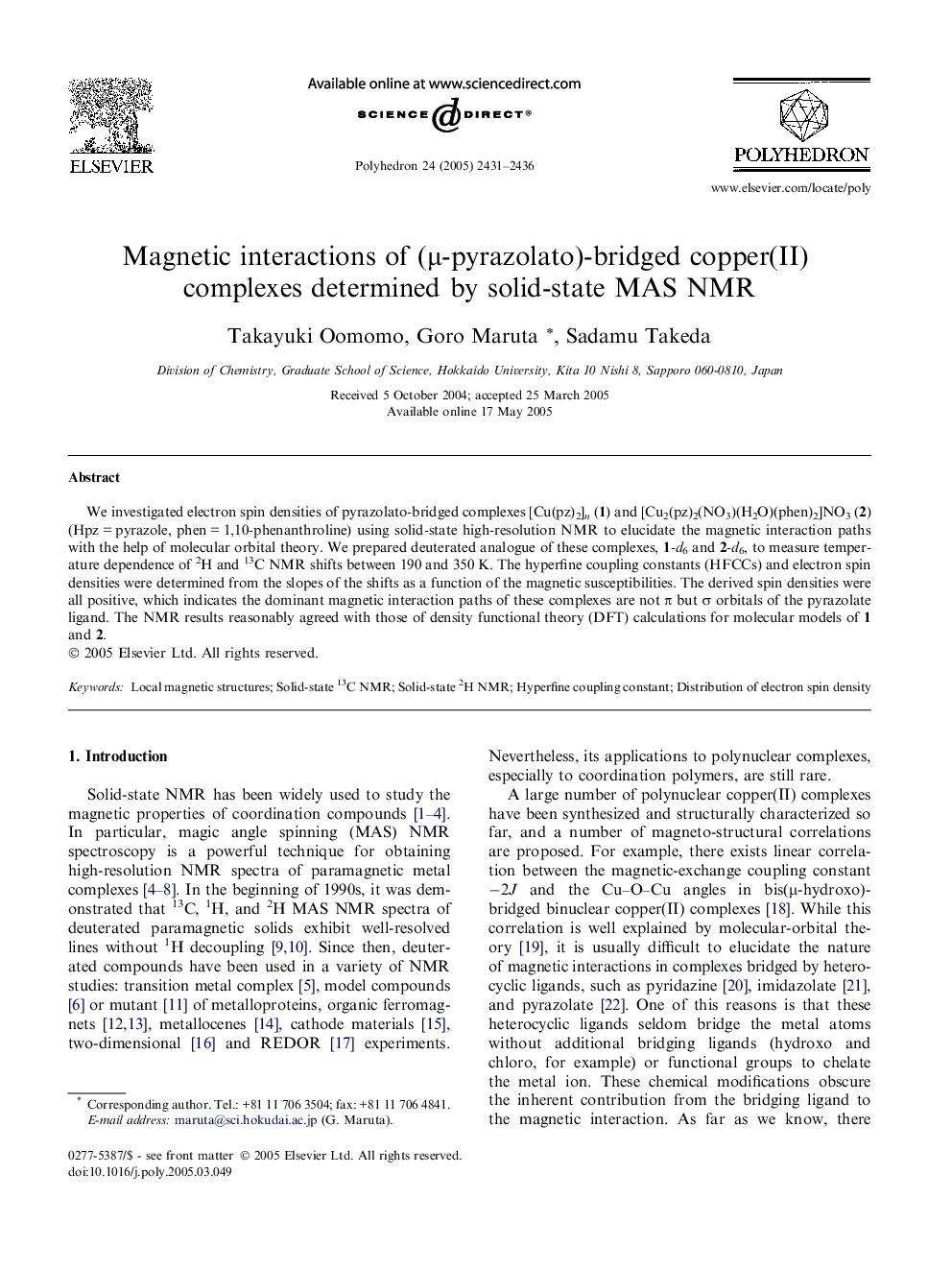| کد مقاله | کد نشریه | سال انتشار | مقاله انگلیسی | نسخه تمام متن |
|---|---|---|---|---|
| 1341107 | 1500295 | 2005 | 6 صفحه PDF | دانلود رایگان |

We investigated electron spin densities of pyrazolato-bridged complexes [Cu(pz)2]n (1) and [Cu2(pz)2(NO3)(H2O)(phen)2]NO3 (2) (Hpz = pyrazole, phen = 1,10-phenanthroline) using solid-state high-resolution NMR to elucidate the magnetic interaction paths with the help of molecular orbital theory. We prepared deuterated analogue of these complexes, 1-d6 and 2-d6, to measure temperature dependence of 2H and 13C NMR shifts between 190 and 350 K. The hyperfine coupling constants (HFCCs) and electron spin densities were determined from the slopes of the shifts as a function of the magnetic susceptibilities. The derived spin densities were all positive, which indicates the dominant magnetic interaction paths of these complexes are not π but σ orbitals of the pyrazolate ligand. The NMR results reasonably agreed with those of density functional theory (DFT) calculations for molecular models of 1 and 2.
Bis-μ-pyrazolato-bridged copper(II) complexes, [Cu(pz)2]n and [Cu2(pz)2(NO3)(H2O)(phen)2]NO3, were investigated by solid-state high-resolution deuterium and carbon-13 NMR. We found delocalized electron spin on H and C atoms of the bridging ligands. We conclude that the σ-orbital system of the ligand is the dominant magnetic interaction pathway.Figure optionsDownload as PowerPoint slide
Journal: Polyhedron - Volume 24, Issues 16–17, 17 November 2005, Pages 2431–2436